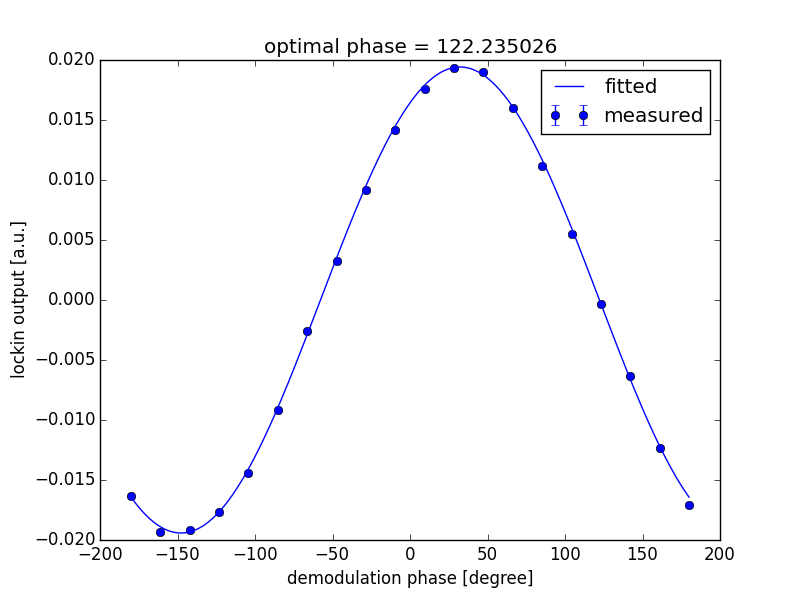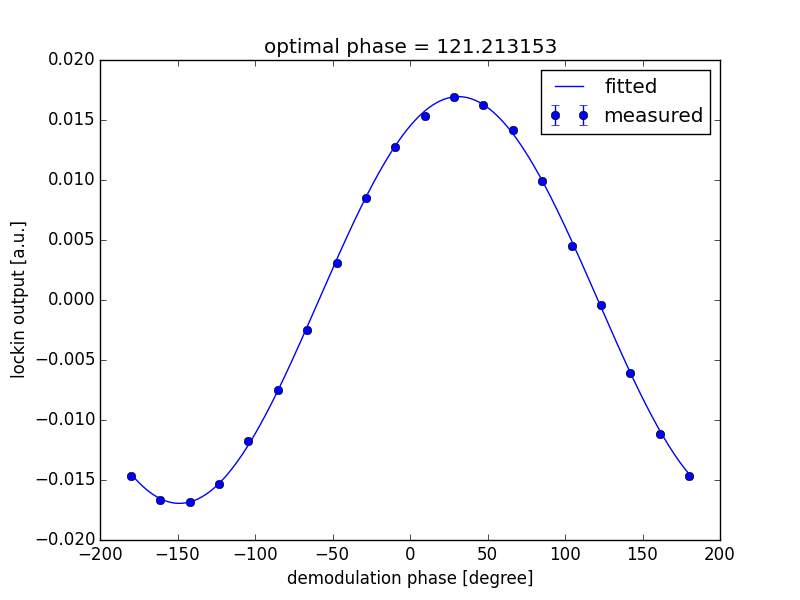With advice from Kiwamu

Kiwamu suggested to us the new measurement procedure for Schnupp asymmetry. The Schnupp asymmetry was measured as 3.3 m (preliminary). This result is consistent with the designed value.
We are not sure why the previous measurement has the wrong result so far, but we might need to find the reason.
Measurement principle
The detail is written in the attached Jupyter notebook. Briefly saying, compare the time of flight of photon from the EOM to the PD when each arm cavity is locked. We can derive the Schnupp asymmetry L_d from the optimal demodulation phase theta_d corresponding the flight time difference as
L_d = theta_d/(2 omega_m) c,
where omega_m is the modulation frequency.
Measurement procedure
The arm cavity loop is fully analog, and the I-MON port of the I/Q demodulator of REFL45 is used as the error signal. Therefore, the digital I/Q rotator of REFL45 is just a monitor channel, and we can rotate as we want without any effect on the loop.
I used the digital lock-in amp. The oscillator was connected to the MCE to excite the laser frequency, and REFL45I was the signal for lock-in. I rotate the demodulation phase by 360 degrees and measure the lock-in output at each demodulation phase. The result is shown in the attached figure, and the optimal phase was derived by sine fitting of this measurement data.
This procedure was written down in the script /users/Commissioning/scripts/demodphase_optimization.py
Result
The optimal phases for Xarm and Yarm were 122 and 121, respectively. Here, note that we have a Indeterminacy of 360 degrees.
If we assume 360 degrees of additional rotation, the derived Schnupp asymmetry is 3.34 m as shown in the attached Jupyter notebook. This result is consistent with the designed value of 3.33 m.


Xarm Yarm
To do
The error estimation has not been done yet. I'm wondering how to determine the error.
Also, I used 45 MHz as the modulation frequency, but it is not really correct. I need to check the actual number in the mine tomorrow.
By the way
I think this procedure is adapted to the other signal to optimize the demodulation phase. We can fully automate the optimization process, so let's start-up this project.

